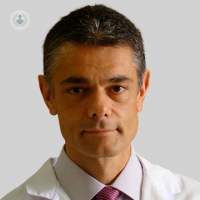Farewell to the ' curse of brokers '
Written by:It is known as plantar fasciitis and is the most feared lesion by runners, because it already represents 10% of all injuries in the lovers of the race. The general population between 25 and 65 years does not get rid of it either. It occurs in the form of dull and sharp pain in the sole of the foot that may appear during physical activity or cold, when the foot is supported in the morning, when getting out of bed or after a period of rest. It can even cause lameness. Experts warn of the need to consult a specialist for any discomfort of this type that lasts more than a week.
What is it?
The plantar fascia is a structure of collagenous tissue that expands , like a fan, from the calcaneus to the anterior region of the foot.. It cushions the impacts and supports the foot in all its movements.
Repeated trauma can lead to the degeneration of collagen tissue, from an inflammatory condition, in acute phases, to a chronic degenerative disease.
For this reason, it is important before embarking on a run to undergo a biomechanical study of the footprint and choose the right sports footwear, which will allow us to prevent injuries, including plantar fasciitis.
Treatments
In the case that the lesion is already present, a fact that is determined by clinical history and imaging tests, we must know that there are effective treatments but, unfortunately, 10% of cases are chronic and require surgery. The classic options were conventional open surgery (with incisions of 5-6 cm and large dissection of tissues) or endoscopic surgery (with one or two portals of 1-2 cm incision).

Surgical news
Ultra-minimally invasive ultrasound guided surgery has revolutionized the old procedures, as just recognized by the American Academy of Orthopedic Surgeons (AAOS), which has just awarded Sports Advocacy for its new technique.
It is performed with a minimal incision (1-2 mm) and under ultrasound control (without having to open). The patient does not have to enter, the intervention is ambulatory and allows the immediate support of the foot after the intervention. This pioneering treatment has shown greater precision, safety and efficacy than the surgical therapies applied until now, as well as reducing the pain and recovery time of patients .
In addition, the advantages described above outweigh the classic contraindications of intervention in patients with diabetes or vascular insufficiency, because the problems of scarring or the risk of circulatory complications, such as thrombosis, almost disappear when done without ischemia, with minimal damage of the tissues and without the need to give points.


